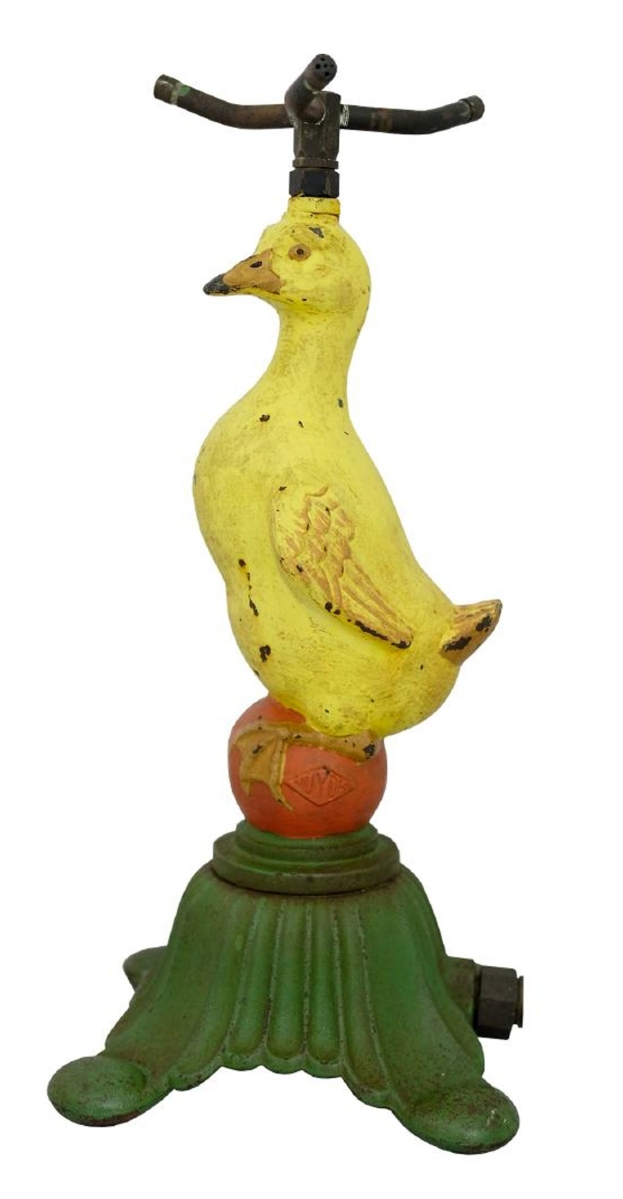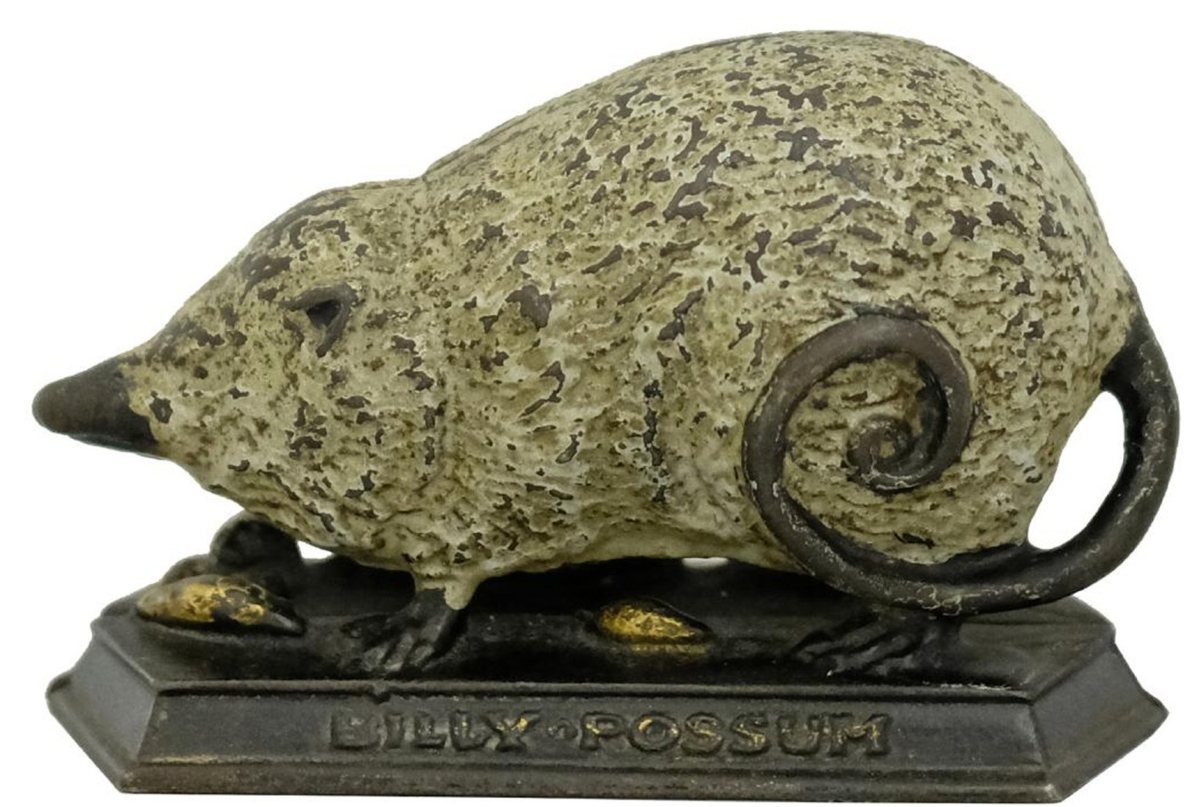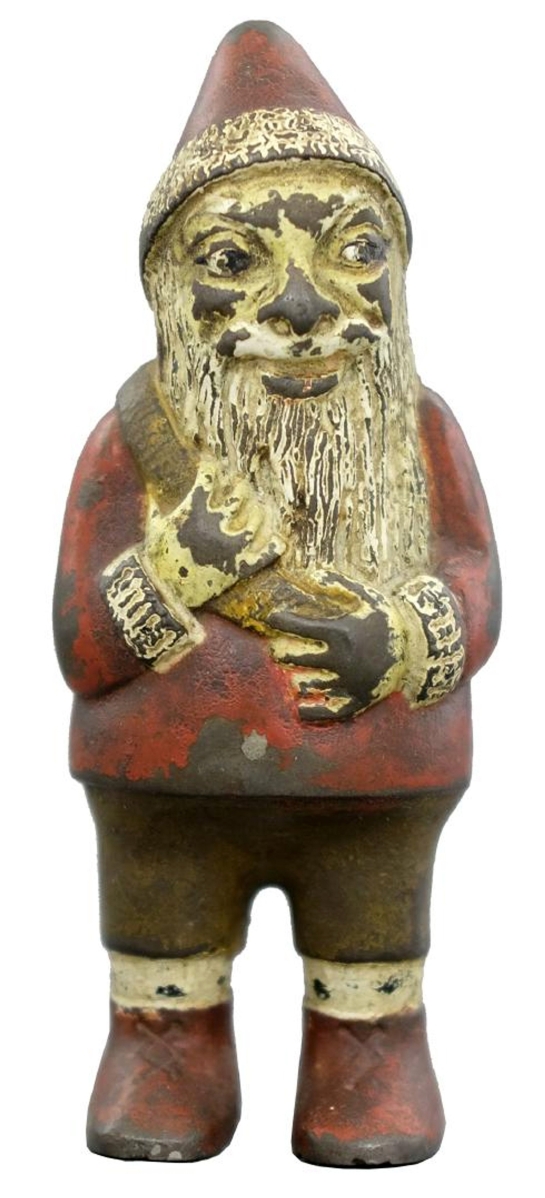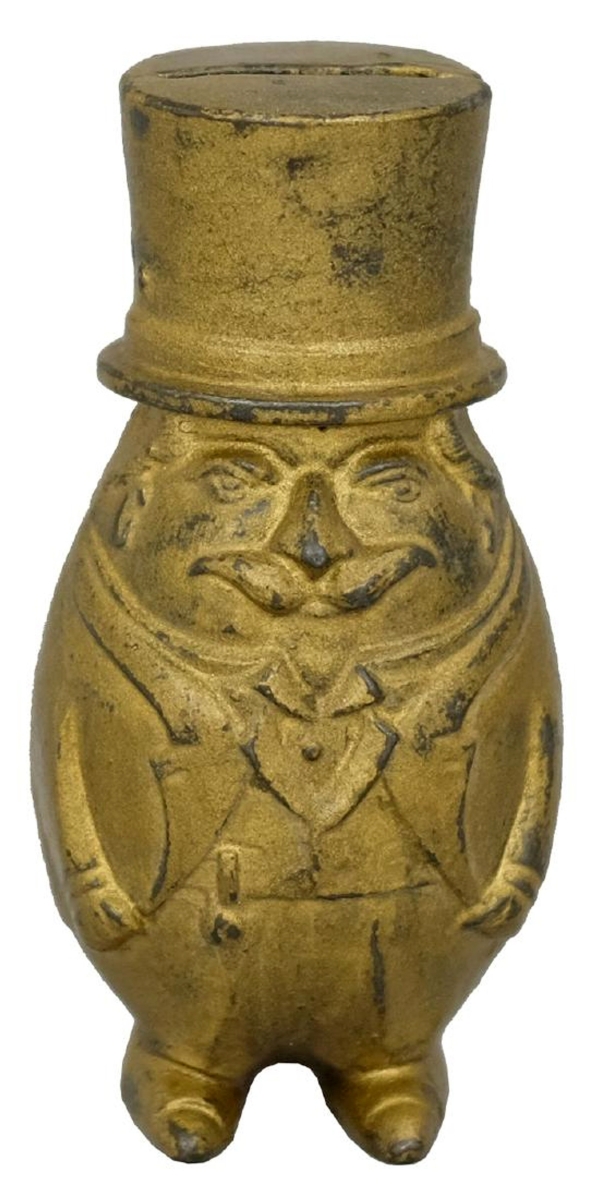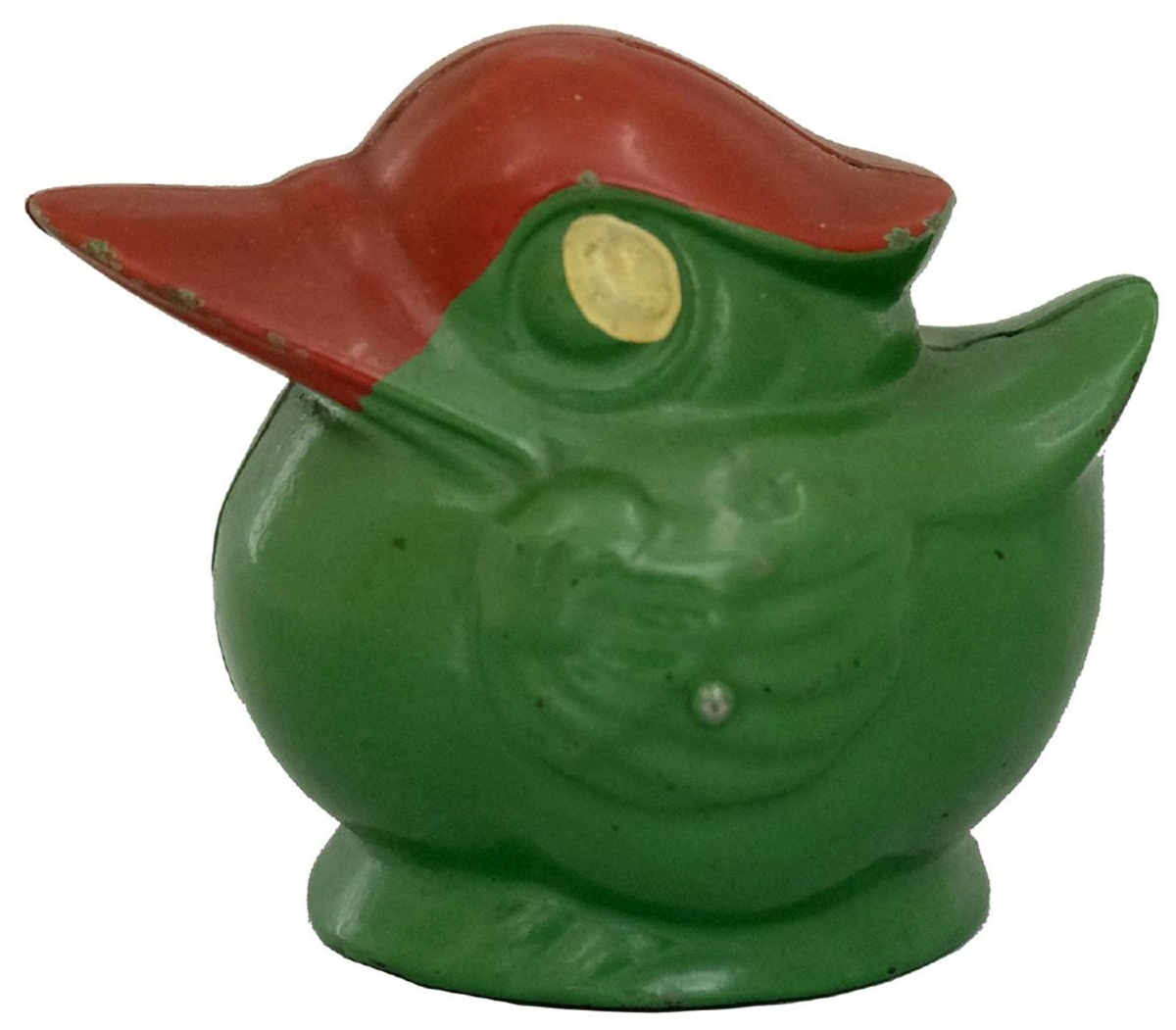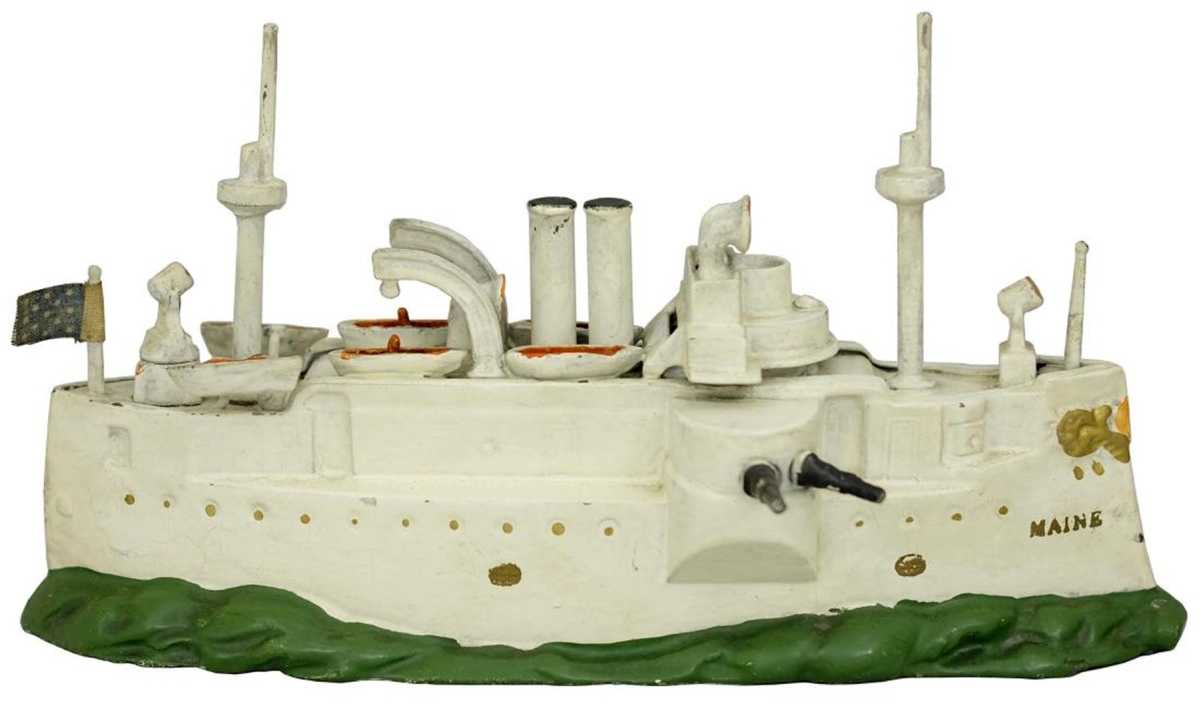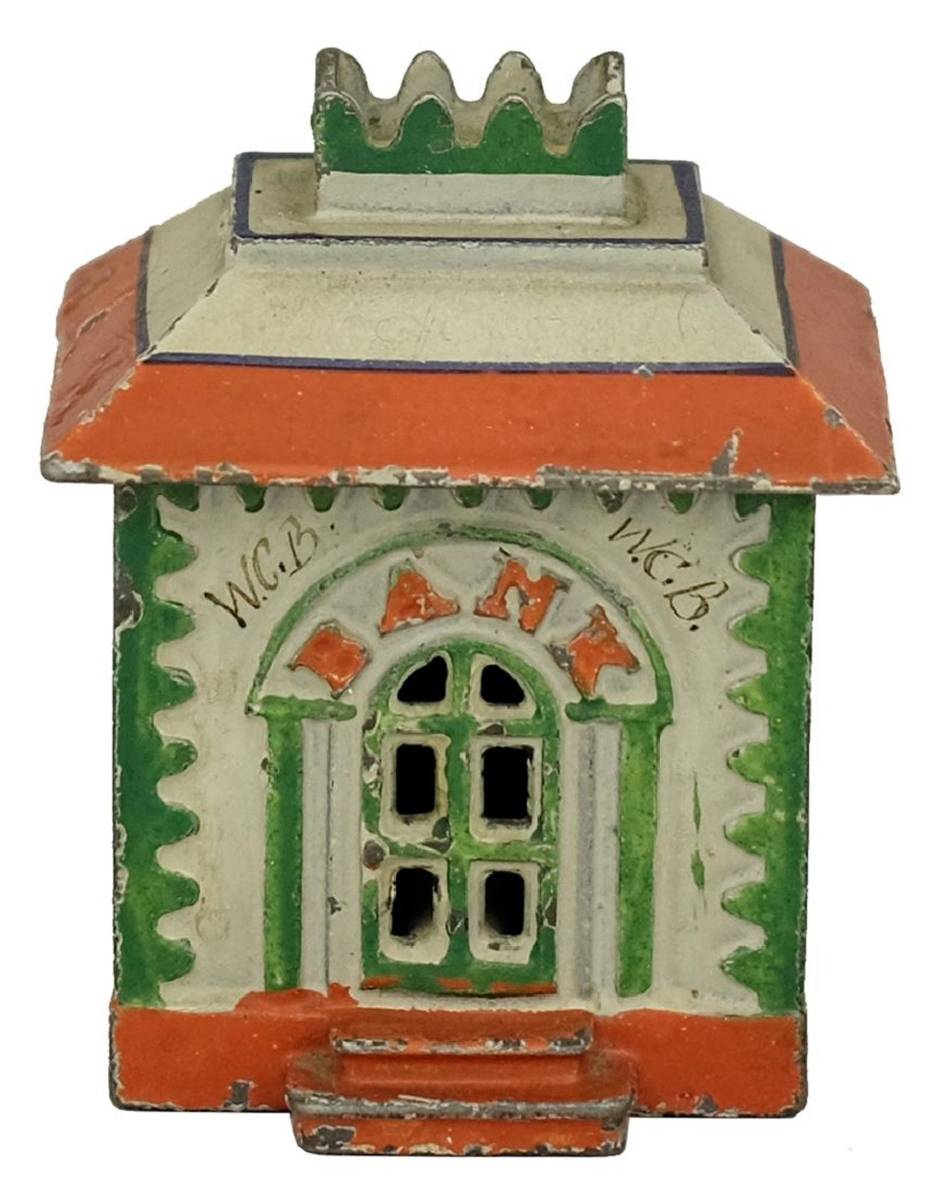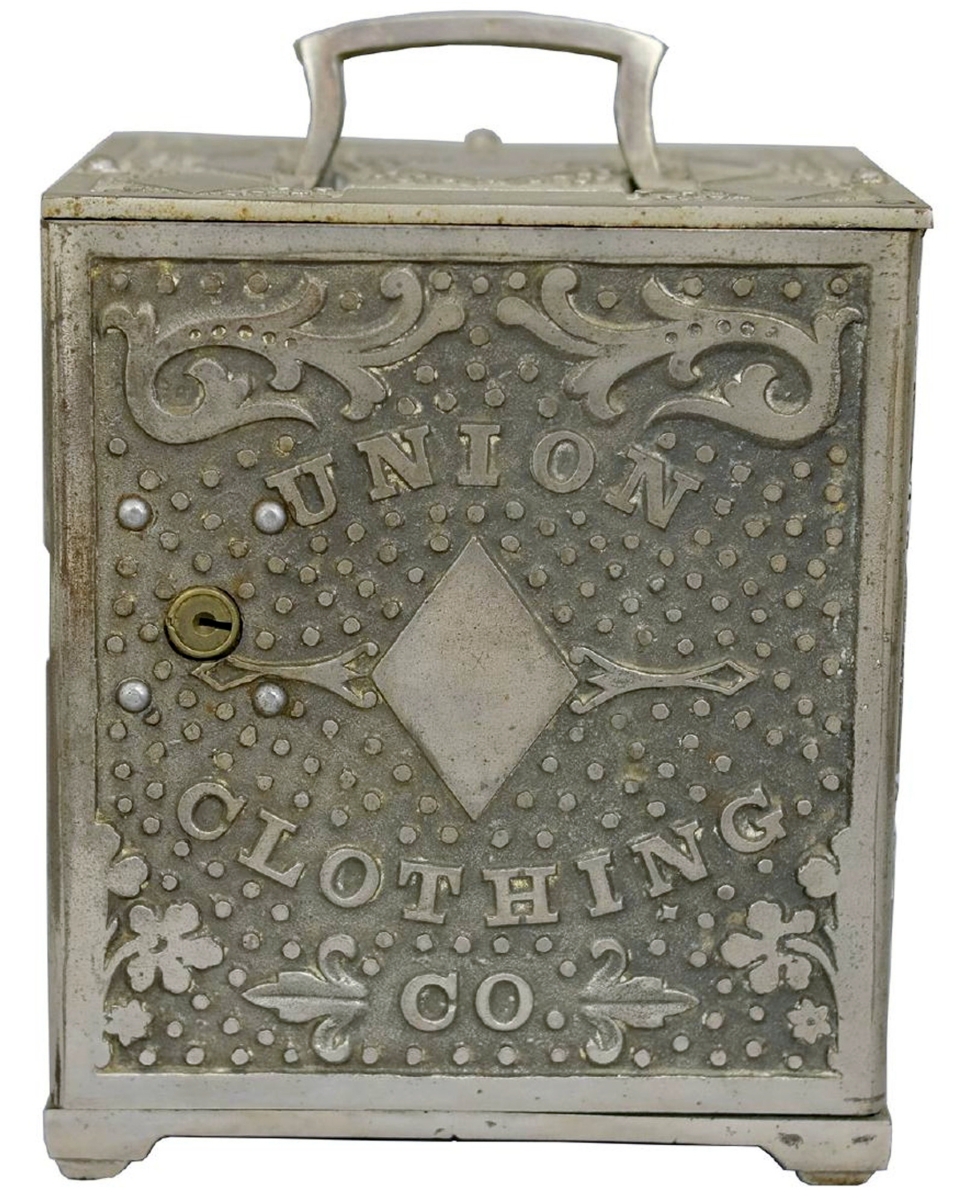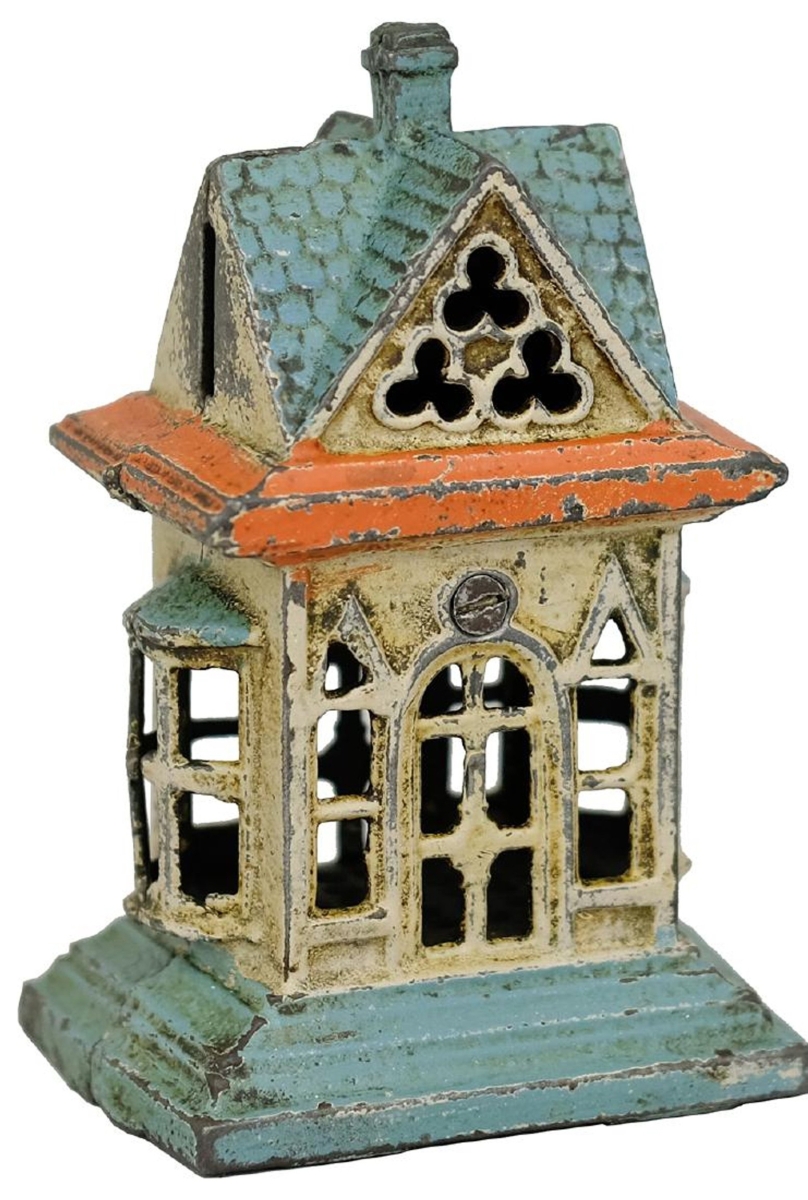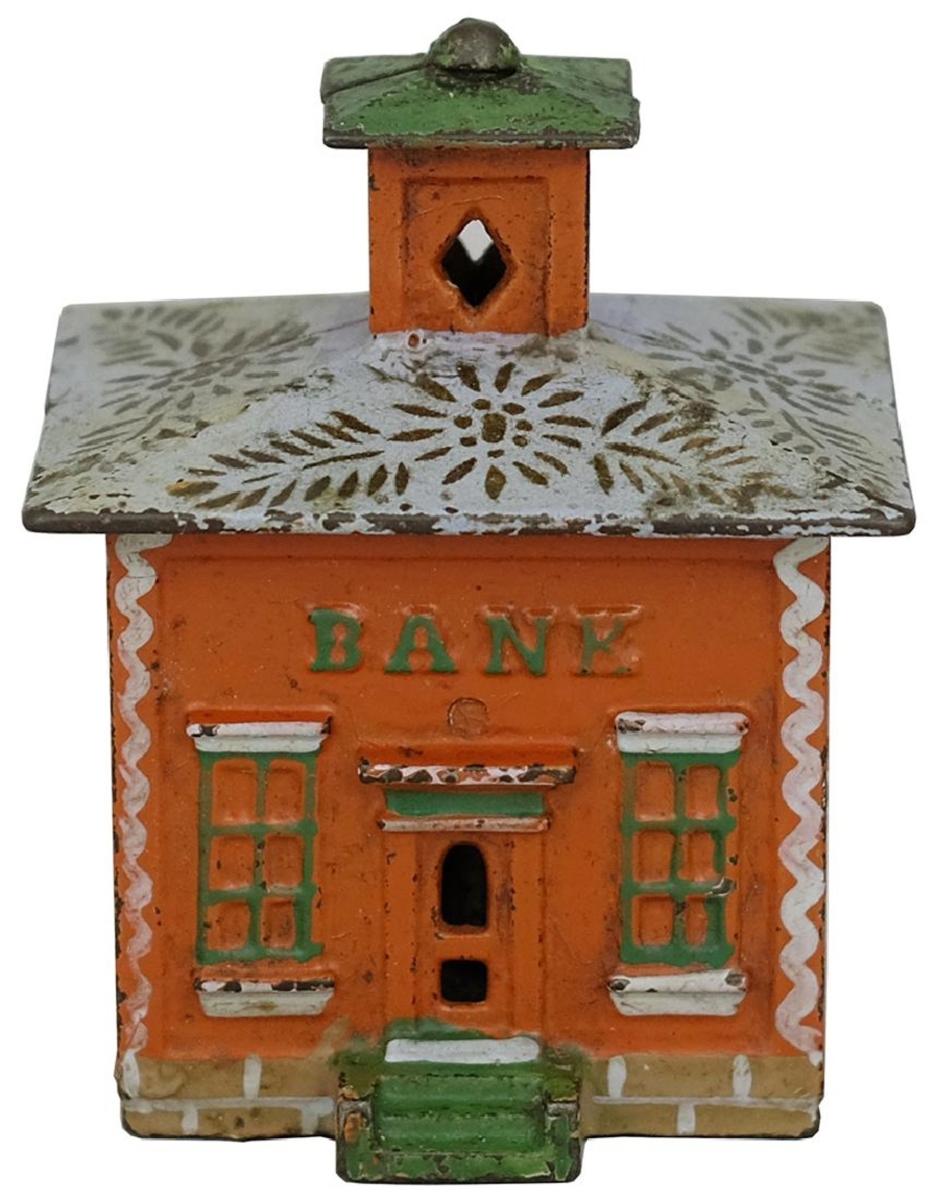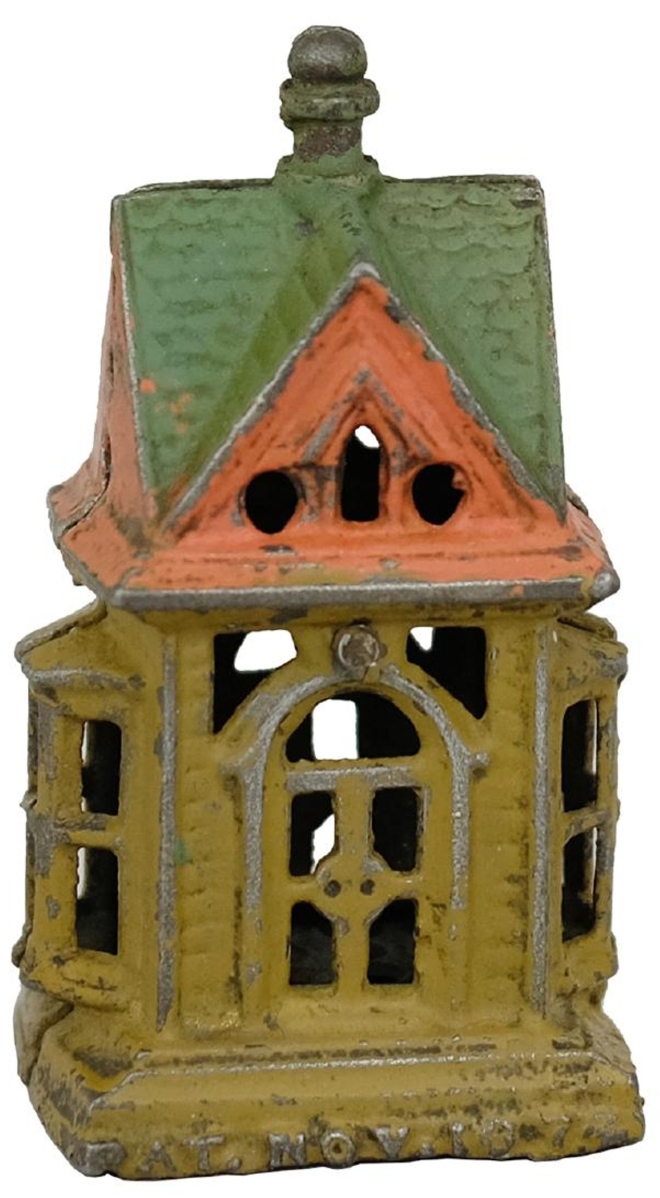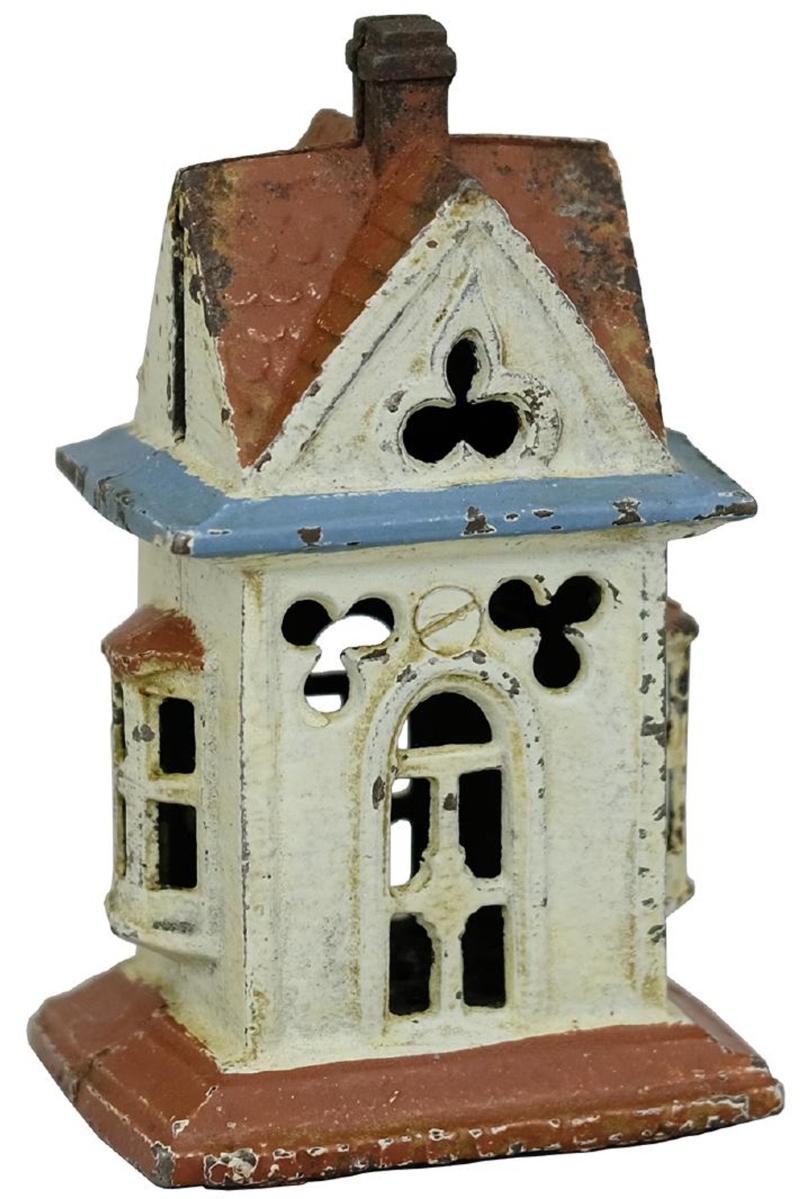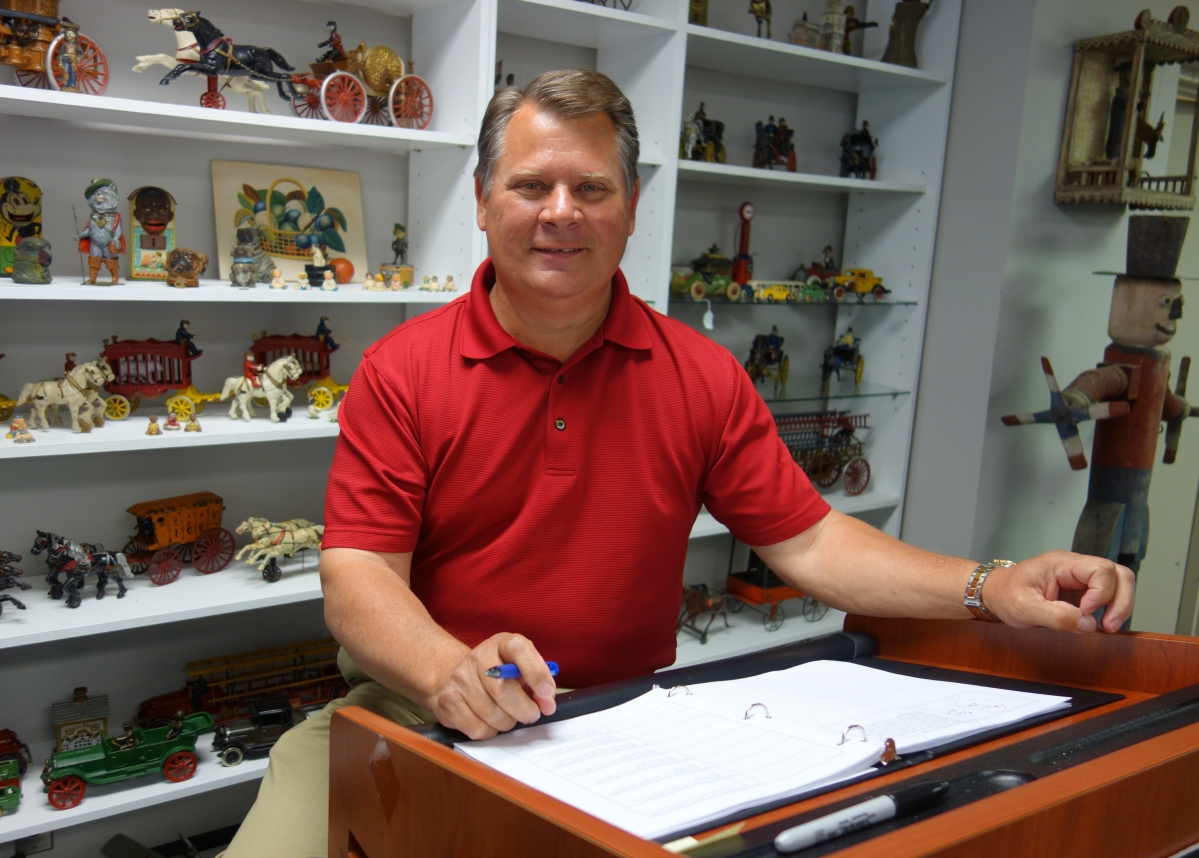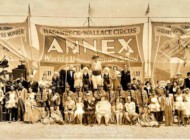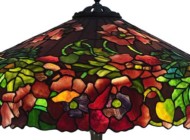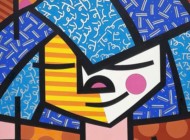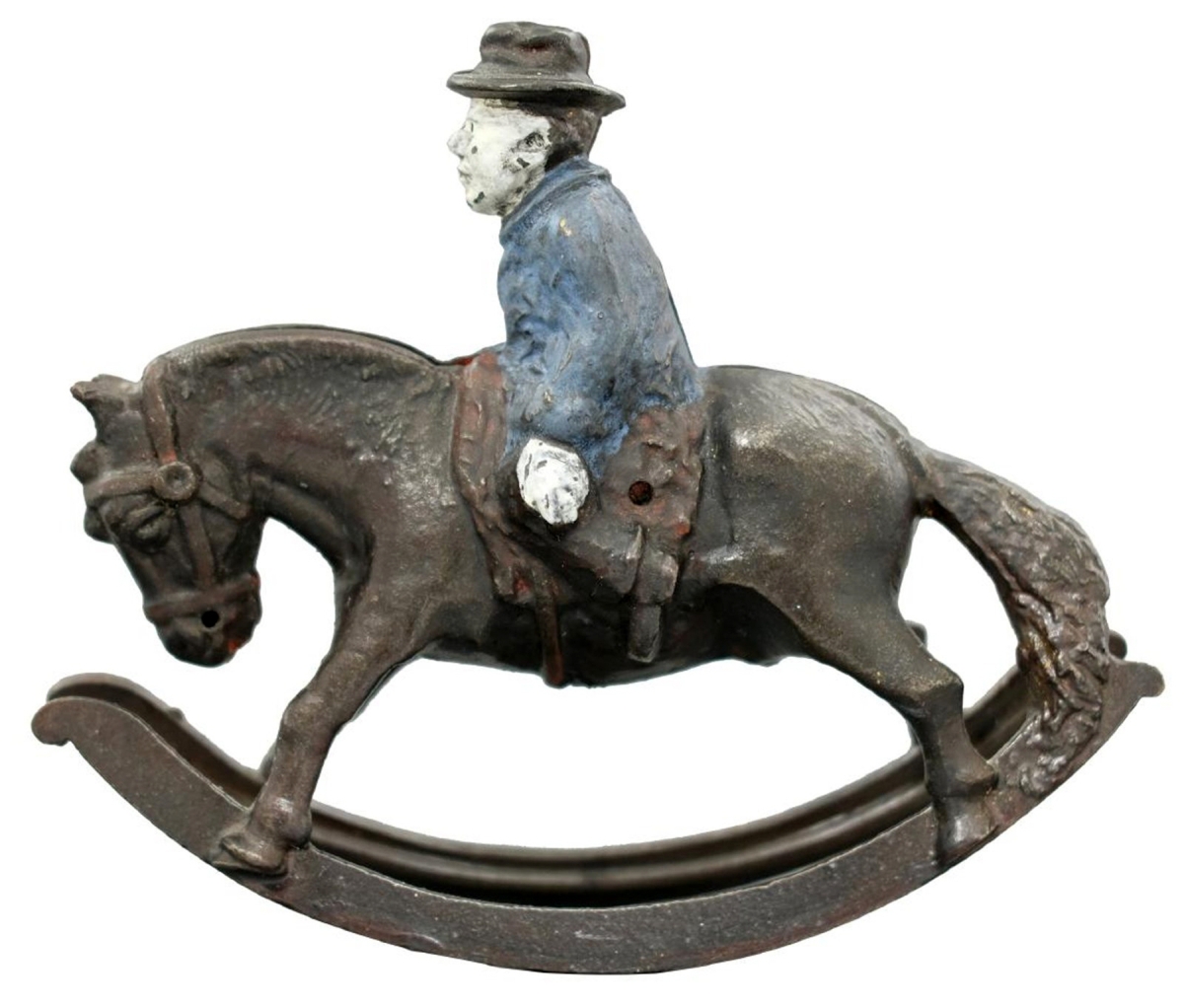
There are only two known Circuit Rider banks, manufacturer unknown, American, circa 1890, cast iron. This one is in pristine condition and sold for just under the high estimate at $24,000. The slot for the coins is in the horse’s mane and when the horse rocks it is deposited into the bank.
Review and Onsite Photos by R. Scudder Smith, Catalog Photos Courtesy RSL Auctions
WHITEHOUSE STATION, N.J. – It was about 40 years ago that Dr Gregory Alan Zemenick, better known as Dr Z, took on a new interest in life and immersed himself in learning all about the history of American toys and banks. It was not a journey that he took alone, but he gathered a group of collectors around him that was later known as the “Detroit Crew.” Members included Barry Seiden, Larry Feld, Jim Rocheleau, Jimmy Potts and Tim Walsh, all well-known collectors. During the years, members of this group were leaders of the Bank Club, hosted conventions and gave countless lectures on the importance and history of toys and banks.
Dr Z was the leader of the group and he preached honesty at a time when needed and he thrived on educating fellow collectors.
Dr Z and his wife Bernadette are about ready to take a new direction in life, including a move to a location closer to their grandchildren. He is sadden by the sale of his collection, but he is pleased that collectors of today will enjoy the objects as much as he has.
For weeks prior to the auction at RSL his collections were on view and admired in glass cases. But even with his house void of the things he lived with, the collecting bug was alive and well. He informed Ray, Steven and Leon that he had just purchased a great bank from the original family. That collecting bug will never go away, luckily.
The collection of Dr Z took two sessions. The second one was on Sunday, June 3, with a selection of folk art objects and 300 lots of still banks. The first bank sold was the rare Circuit Rider, followed by Boss Tweed (“Tammany Tiger”), manufacturer unknown, American, circa 1873, in pristine condition. Only a handful of these cast iron banks are known to exist, and this one brought $7,200. A few lots later, General Butler, made by J&E Stevens Company, Cromwell, Conn., circa 1889, was in excellent condition and sold for $1,800. Benjamin Butler was a general in the Union Army during the Civil War. This is listed as a superior example of the bank.
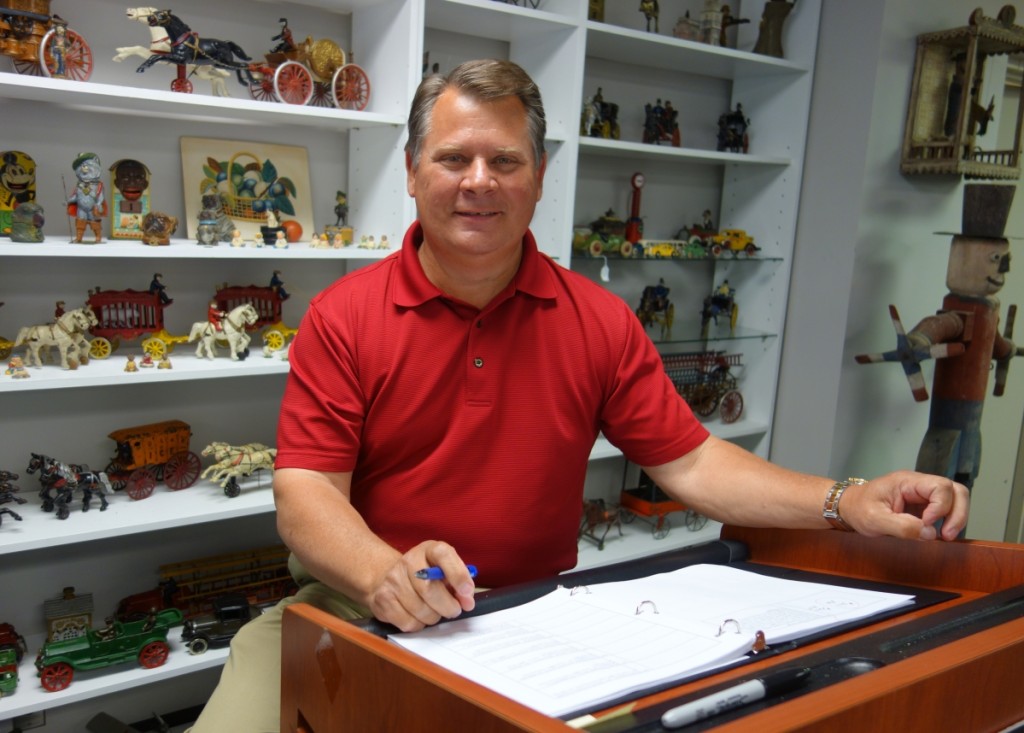
Doug Rait of Laurence, Kan., served as guest auctioneer for the still bank collection of Dr Z that was sold Sunday afternoon.
The Clown with Crooked Hat by Ober Mfg. Co., Chagrin Falls, Ohio, circa 1905, is a cast iron bank and an excellent example which sold for $1,200. Hubley Mfg. Co. of Lancaster, Penn., made Santa in two different versions. One with no tree, in fine condition, that sold for $300 and Santa with Tree, also fine condition, that sold for $168. On the facing page of the catalog the Sharecropper with toes visible on both feet, Ober Mfg. Co., circa 1905, brought $330, within estimate.
A colorful Man on Bale of Cotton, made by US Hardware, circa 1890, in excellent condition sold over the $1,200 estimate at $1,920. It retains its original trap. Several lots later, Saving Sam, probably by Grey Iron Casting Co., Mount Joy, Penn., circa 1930, of aluminum, in excellent condition, brought $1,200, almost twice the high estimate. Ober Mfg. Co. produced Billy Can, circa 1910, a cast iron bank in excellent-plus condition that went over the $750 high estimate selling for $960.
The Seated Dog with a red bow around its neck and a large cigar protruding from its mouth was made by Hubley Mfg. Co., circa 1930, in very fine condition, went over the $900 high estimate selling for $1,920. A rare paint variation of Save For A Rainy Day Duck was made by Hubley Mfg. Co., circa 1930, over estimate it brought $840. This cast iron bank, painted black instead of normal red, is in pristine condition and the catalog noted that “we have never seen this bank painted in this manner.” By comparison the Save For A Rainy Day Duck in near mint condition, red version, brought $390. Another duck, the scarce green version with red head of Round Duck by Kenton Hardware, Kenton, Ohio, circa 1930, soared past the $700 high estimate and sold to the internet for $4,800. This pristine cast iron bank was acquired by Dr Z from a Kenton employee.
Dr Z was not only interested in cast iron banks, but he was also taken by the wooden patterns by which they were made. Several examples of this were lot 804, the pattern for Small Turkey, A.C. Williams, Ravenna, Ohio, circa 1925, in pristine condition. It sold for $1,080 and was followed by the Small Turkey bank that was made from that mold in cast iron and in excellent-plus condition. This turkey sold for $180, with both of them going over estimates. Following the Small Turkey was the wooden pattern for the Large Turkey, also made by A.C. Williams, circa 1925, in pristine condition that brought $840, and the cast iron Large Turkey made from that mold went below estimate at $72. The Buffalo Bank, by A.C. Williams, also was represented by a wooden pattern for $2,160, and a cast iron bank made from that mold brought $48.
A Canadian Beaver, an extremely rare cast iron bank, with perhaps only 8 to 10 examples known to exist, dates to the 1930s. This lot has been repainted and a tiny piece has been broken off. Despite these shortcomings, the bank sold very close to the high estimate at $2,400. Among a selection of elephants was one of small size with swivel trunk, probably made by Ives, Blakeslee Co., Bridgeport, Conn., circa 1905, cast iron and in pristine condition, that brought $480, over the $300 high estimate. On the following page, the Cash Register Savings Bank, circa 1894, pristine condition, made of cast iron, glass and paper sold over the high estimate for $1,200.
Among one of the prettiest still banks ever produced was the Apple Bank made by Kyser & Rex, circa 1890, cast iron, excellent condition that sold for $1,320, over estimate. Following six size versions of battleships Maine and Oregon came one of the stars of the auction, the Battleship Maine, the largest size. It was made by J&E Stevens Company, circa 1900, and is in mint and bright condition. With a high estimate of $9,000, this bank sold for $15,600, and the catalog notes that “it is probably the finest known specimen of this bank.” Another popular still bank, the Water Wheel, cast iron and steel with the wheel painted red, dates 1905. The maker of this scarce bank has never been determined. It sold over the $900 high estimate for $1,320.
J.M. Harper, Chicago, was represented by three banks, all shown on one page, with Santa and Pack, in fine condition, selling for $3,600 followed by George Washington Bust, circa 1905, at $1,080, and Red Riding Safe, circa 1905, excellent condition that sold for $3,120. Thirty-two safe banks were pictured on five pages of the catalog and the variety included the Pet Safe, black with red door, Kenton Hardware that sold for $900; a Red Ball Safe by Arcade went for $450; The Globe by Kenton Hardware, $240; “Fortunes Are Made” safe by Henry C. Hart Mfg. Co., circa 1895, $900; Three Dial Safe, maker unknown, went for $2,160; and “Union Clothing Company” Diamond Safe, 7¾ inches tall, went for $1,020.
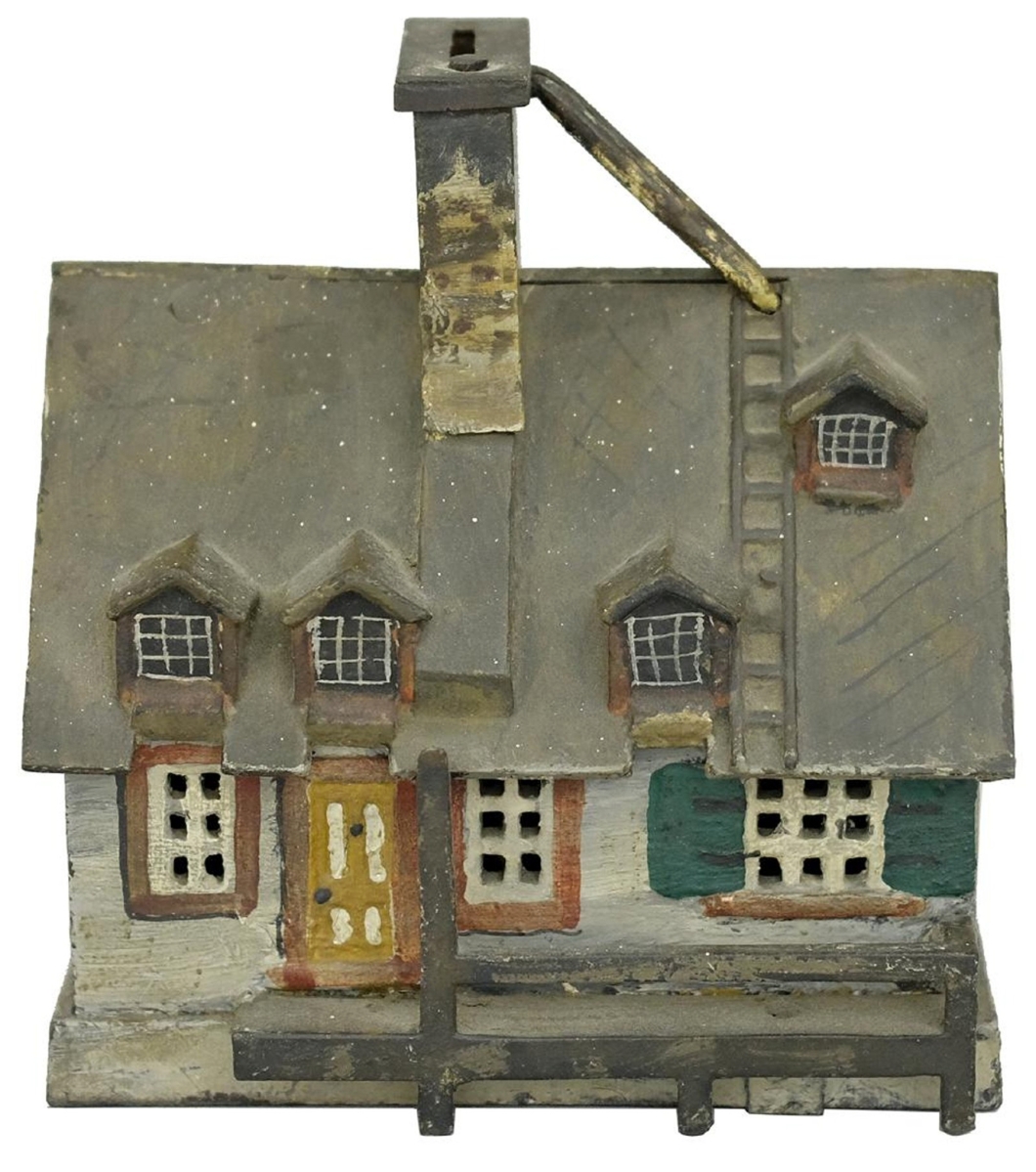
Tucked in the lineup of banks, eighth from the end of the auction, was the “Old Quebec” Bank, dated 1908 and probably Canadian origin. The excellent-plus condition, cast iron, brought $21,600, well over the $12,000 high estimate. This is one of the rarest bank buildings ever made, and maybe five examples are known. This one is complete with the upper ladder.
The safes led into a wide selection of building banks, including Log Cabin, chimney right, by Kyser & Rex Co., circa 1880, pristine, that went for $540, above estimate and House with Chimney Slot, probably by Kyser & Rex Co., excellent-plus condition, also sold over estimate at $1,080. “John Brown’s Fort”, circa 1880s, excellent condition, went over estimate selling for $1,200. John Brown was an American abolitionist who believed in armed insurrection as the only way to overthrow slavery.
Three pages of the catalog were devoted to small colorful banks, including a medium Crown Bank, J&E Stevens Company, circa 1872, red, yellow and blue, for $660, and a medium Flat Top, 4¼ inches tall, went over estimate at $3,120. A Small Crown Bank in patriotic colors, almost doubled the high estimate at $1,020, while an “1882” Villa Bank in red with gilt decoration on the front went over estimate at $1,320. A large Boston State House by Smith and Egge, circa 1880s, excellent-plus in cast iron, sold for $9,000, the low estimate. This building was completed in 1797 and overlooks the Boston Common.
Travel now to New York Harbor where the Statue of Liberty stands and a large version of this figure in blue, Kenton Hardware, circa 1915, brought $1,920, and another well known landmark, the Eiffel Tower, painted, made by Sydenhan & McOustera, England, 1910, noted in the catalog as a superb example, in brown and gold paint, brought $1,200 within estimate.
Selling over estimate at $2,760 was the Ironmaster’s House-combination-small door, by Kyser & Rex Co., circa 1884. And a large Cupola, brick red, J&E Stevens Company, circa 1872, near mint, more than doubled the high estimate at $3,240.
The importance of paint made itself known with lot 1011. A large Crown bank, J&E Stevens Company, excellent-plus in yellow with blue trim and a red roof sold over the $900 high estimate to bring $1,560, and the Home Bank, deep version, again Stevens, circa 1872, went for $2,760, almost twice the high estimate in patriotic colors. Another Home Bank, this time the shallow version in cream and red with tan roof, went over the $4,000 high estimate, selling for $5,100. The catalog notes that “this is one of the finest examples of this scarce bank in existence.”
The last few pages continued with buildings, including the Triangular Building at $330, the Reid Library at $168, the largest size Flat Iron building at $1,200 and second largest Flat Iron brought $144. The final lot, the small Independence Hall – 3 in 1, by Enterprise Mfg. Co., Philadelphia, circa 1876, fine condition, brought $540.
Remember, that at the start of this review, mention was made that Dr Z had already bought another prize still bank before any of the aforementioned banks had crossed the block – possibly an indication that another still bank collection is starting to materialize.

